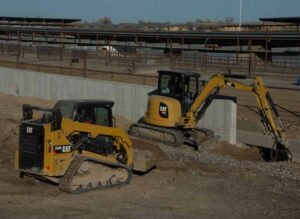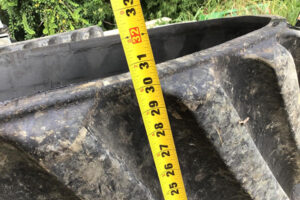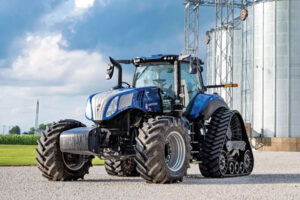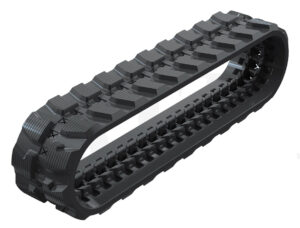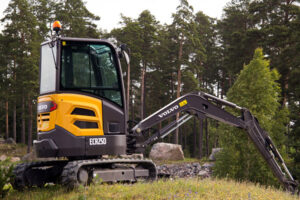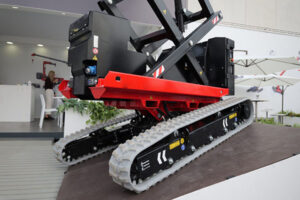Cómo elegir las orugas de goma perfectas para su cargadora o excavadora CAT: Guía sencilla
Tabla de contenido
I. Introducción
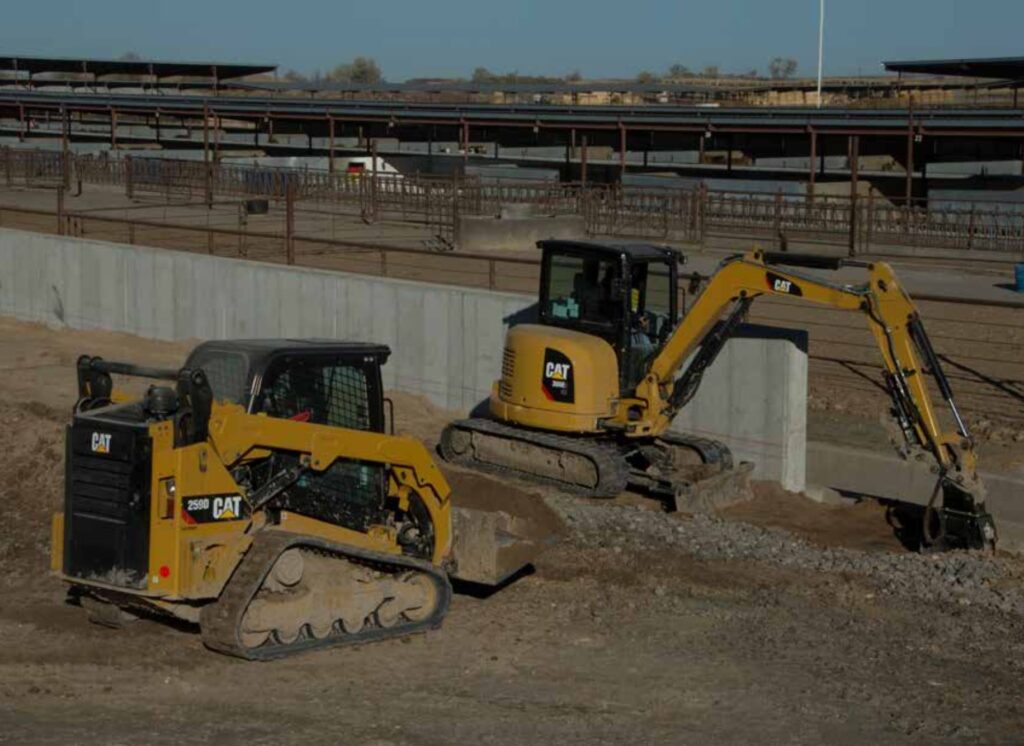
II. ¿Por qué es tan importante elegir las orugas de goma adecuadas para su CAT?
III. Comprenda los conceptos básicos: ¿Qué compone una oruga de caucho CAT?
- El primer número (como 320) indica el ancho de la oruga en milímetros (mm). Unas orugas más anchas distribuyen mejor el peso de la máquina, lo cual es ideal para terrenos blandos.
- El segundo número (como 86) es el paso. Esta es la distancia desde el centro de una pieza metálica dentro de la pista (llamada enlace o barra de núcleo) hasta el centro de la siguiente. Debe coincidir con el piñón de su máquina.
- El tercer número (como el 49) corresponde a los eslabones. Indica cuántos eslabones metálicos hay dentro de la pista en toda su circunferencia.
IV. ¿Qué orugas de caucho son compatibles con las cargadoras compactas de orugas (CTL) CAT?
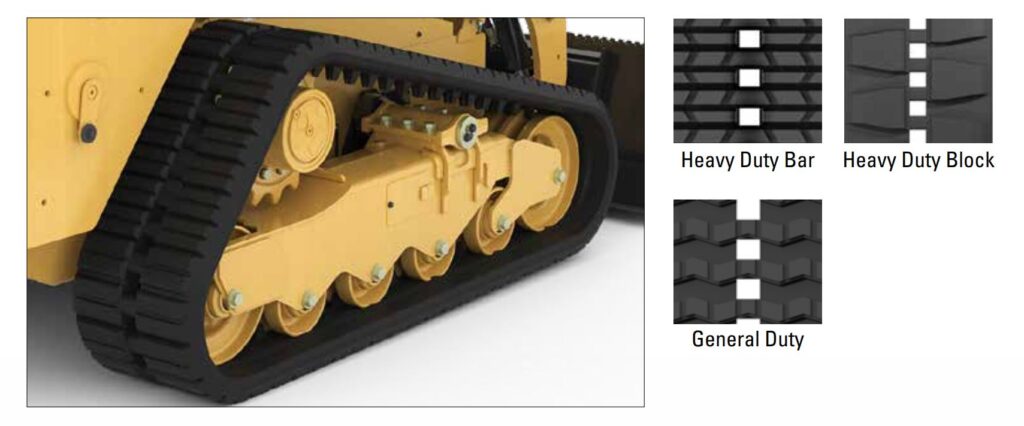
· Rieles de barra de alta resistencia:
· Vías de bloqueo para trabajos pesados:
· Vías de servicio general:
| Modelo de máquina | Serie de máquinas | Número de pieza de la pista | Tamaño de la pista: ancho x paso x número de orejetas mm (pulg.) | Descripción |
|---|---|---|---|---|
| 239, 249 | D, D3 | 592-5444 | 320x86x49 (12,6x3,4x49) | Pista de bloque de servicio pesado de 320 mm (12,6") |
| 239, 249 | D, D3 | 561-5496 | 400x86x49 (15,7x3,4x49) | Riel de barra de alta resistencia de 400 mm (15,7") |
| 259 | B3, Re, Re3 | 592-5445 | 320x86x53 (12,6x3,4x53) | Pista de bloque de servicio pesado de 320 mm (12,6") |
| 259 | B3, Re, Re3 | 592-5827 | 400x86x53 (15,7x3,4x53) | Riel de bloque para trabajo pesado de 400 mm (15,7") |
| 259 | B3, Re, Re3 | 561-5498 | 400x86x53 (15,7x3,4x53) | Riel de barra de alta resistencia de 400 mm (15,7") |
| 259 | B3, Re, Re3 | 584-7121 | 320x86x53 (12,6x3,4x53) | Oruga de servicio general de 320 mm (12,6") |
| 259 | B3, Re, Re3 | 593-2029 | 400x86x53 (15,7x3,4x53) | Oruga de servicio general de 400 mm (15,7") |
| 279/289 | C2, D, D3 | 593-1012 | 450x86x56 (17,7x3,4x56) | Vía de bloque de servicio pesado de 450 mm (17,7") |
| 279/289 | C2, D, D3 | 592-5828 | 400x86x56 (15,7x3,4x56) | Riel de bloque para trabajo pesado de 400 mm (15,7") |
| 279/289 | C2, D, D3 | 584-7123 | 450x86x56 (17,7x3,4x56) | Oruga de servicio general de 450 mm (17,7") |
| 279/289 | C2, D, D3 | 592-5441 | 450x86x56 (17,7x3,4x56) | Riel de barra de alta resistencia de 450 mm (17,7") |
| 279/289 | do | 592-5830 | 450x86x56 (17,7x3,4x56) | Vía de bloque de servicio pesado de 450 mm (17,7") |
| 279/289 | do | 592-5829 | 400x86x60 (15,7x3,4x60) | Riel de bloque para trabajo pesado de 400 mm (15,7") |
| 279/289 | do | 584-7124 | 450x86x60 (17,7x3,4x60) | Oruga de servicio general de 450 mm (17,7") |
| 279/289 | do | 561-5500 | 450x86x60 (17,7x3,4x60) | Riel de barra de alta resistencia de 450 mm (17,7") |
| 299 | C, D, D XHP, D2, D2 XHP, D3, D3 XE | 592-5830 | 450x86x60 (17,7x3,4x60) | Vía de bloque de servicio pesado de 450 mm (17,7") |
| 299 | C, D, D XHP, D2, D2 XHP, D3, D3 XE | 592-5829 | 400x86x60 (15,7x3,4x60) | Riel de bloque para trabajo pesado de 400 mm (15,7") |
| 299 | C, D, D XHP, D2, D2 XHP, D3, D3 XE | 584-7124 | 450x86x60 (17,7x3,4x60) | Oruga de servicio general de 450 mm (17,7") |
| 299 | C, D, D XHP, D2, D2 XHP, D3, D3 XE | 561-5500 | 450x86x60 (17,7x3,4x60) | Riel de barra de alta resistencia de 450 mm (17,7") |
V. ¿Qué orugas de goma son compatibles con las miniexcavadoras CAT (MHE)?
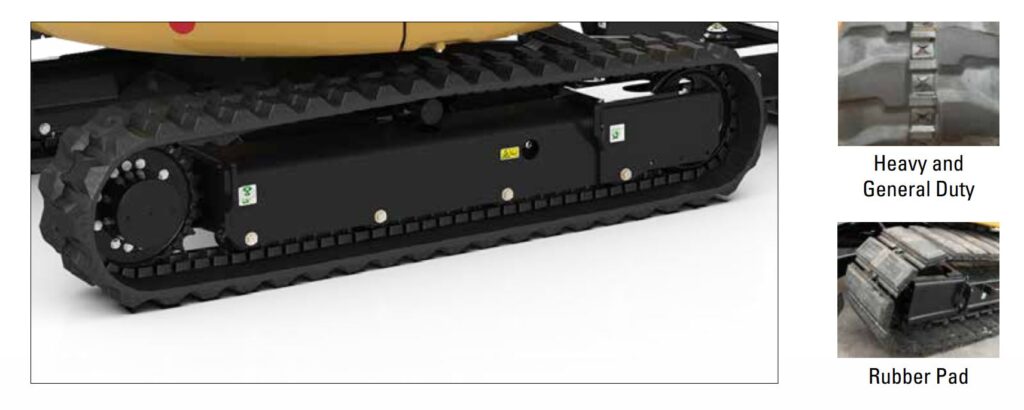
· Orugas para trabajo pesado:
Al igual que las CTL, las orugas de servicio pesado para miniexcavadoras están diseñadas para ofrecer resistencia. Son ideales si su excavadora trabaja muchas horas, ya sea en excavaciones de producción o en obras de construcción difíciles. Están diseñadas para soportar los trabajos más exigentes y durar mucho tiempo, lo que le ofrece una excelente relación calidad-precio durante su vida útil. Si su máquina siempre está ocupada, invierta en orugas de servicio pesado.
· Vías de servicio general:
· Orugas de acero con zapatas de goma:
| Modelo de máquina | Serie de máquinas | Número de pieza de la almohadilla | Descripción |
|---|---|---|---|
| 305 CR, 305.5 CR | E2 | 163-7093 | Almohadilla resistente de 400 mm (15,7") |
| 305 CR, 305.5 CR | E2 | 3B-4508 | Arandela/ 4 por almohadilla |
| 306 CR | 2019, 2020 | 6V-8149 | Tuerca (M12X1.75)/ 4 por almohadilla |
| 308 CR | C, D, E, E2, 2018, 2019, 2020 | 170-4419 | Almohadilla resistente de 450 mm (17,7") |
| 308 CR VAB | E2, 2018, 2019, 2020 | 095-0818 | Arandela/ 4 por almohadilla |
| 308 CR VAB | E2, 2018, 2019, 2020 | 096-4876 | Tuerca (M14X2)/ 4 por almohadilla |
| Modelo de máquina | Serie de máquinas | Número de pieza de la pista | Tamaño de la pista: ancho x paso x número de orejetas mm (pulg.) | Descripción |
|---|---|---|---|---|
| 300.9 | D, VPS | 367-4063 | 180x37x72 (7,1x1,45x72) | Oruga de servicio pesado de 180 mm (7,1") |
| 301.4 | do | 375-5039 | 230x33x96 (9,1x1,3x96) | Oruga de servicio pesado de 230 mm (9,1") |
| 301.5 | 1998-2005 | 234-9368 | 231,5 x 48 x 62 (9,1 x 1,9 x 62) | Oruga de servicio pesado de 231,5 mm (9,1") |
| 301.5 | 2018, 2019, 2020 | 535-9001 | 230x48x64 (9,1x1,9x64) | Oruga de servicio pesado de 230 mm (9,1") |
| 301.5 CR | 2002-2010 | 224-8503 | 230x48x70 (9,1x1,9x70) | Oruga de servicio pesado de 230 mm (9,1") |
| 301.6 | 2000-2005 | 234-9369 | 231,5 x 48 x 66 (9,1 x 1,9 x 66) | Oruga de servicio pesado de 231,5 mm (9,1") |
| 301.6 | do | 374-3462 | 230x96x35 (9,1x3,77x35) | Oruga de servicio pesado de 230 mm (9,1") |
| 301.6 | do | 588-1636 | 230x96x35 (9,1x3,77x35) | Oruga de servicio general de 230 mm (9,1") |
| 301.7 | D | 375-5039 (fijo) | 230x33x96 (9,1x1,3x96) | Oruga de servicio pesado de 230 mm (9,1") |
| 301.7 CR | D | 390-2333 (extensible) | 230x36x96 (9,1x1,4x96) | Oruga de servicio pesado de 230 mm (9,1") |
| 301.7 CR | 2018, 2019, 2020 | 535-9002 | 230x48x70 (9,1x1,9x70) | Oruga de servicio pesado de 230 mm (9,1") |
| 301.8 | 2018, 2019, 2020 | 374-3462 | 230x96x35 (9,1x3,77x35) | Oruga de servicio pesado de 230 mm (9,1") |
| 301.8 | do | 588-1636 | 230x96x35 (9,1x3,77x35) | Oruga de servicio general de 230 mm (9,1") |
| 302 CR | 2018, 2019, 2020 | 521-4087 | 250x48x82 (9,8x1,9x82) | Oruga de servicio pesado de 250 mm (9,8") |
| 302.4 | D | 390-2335 | 250x37x109 (9,8x1,45x109) | Oruga de servicio pesado de 250 mm (9,8") |
| 302.5 | do | 374-3463 | 300x52,5x78 (11,8x2x78) | Oruga de servicio pesado de 300 mm (11,8") |
| 302.5 | do | 588-1650 | 300x52,5x78 (11,8x2x78) | Oruga de servicio general de 300 mm (11,8") |
| 302.7 CR | D | 473-3014 | 300x52x82 (11,8x2x82) | Oruga de servicio pesado de 300 mm (11,8") |
| 303 CR | mi | 153-5982 | 300x52,5x84 (11,8x2x84) | Oruga de servicio pesado de 300 mm (11,8") |
| 303 CR | mi | 588-1520 | 300x52,5x84 (11,8x2x84) | Oruga de servicio general de 300 mm (11,8") |
| 303 CR, 303.5 | CD | 382-3844 | 300x52,5x90 (11,8x2x90) | Oruga de servicio pesado de 300 mm (11,8") |
| 303,5 CR | E, E2 | 588-2816 | 300x52,5x90 (11,8x2x90) | Oruga de servicio general de 300 mm (11,8") |
| 304 CR | 2002-2005 | 238-3231 | 400x72.5x72 (15.7x2.85x72) | Oruga de servicio pesado de 400 mm (15,7") |
| 304 CR | 2002-2005 | 588-1535 | 400x72.5x72 (15.7x2.85x72) | Oruga de servicio general de 400 mm (15,7") |
| 304 CR | D | 344-8848 | 350x52,5x90 (13,7x2x90) | Oruga de servicio pesado de 350 mm (13,7") |
| 304 CR, 304.5 CR XTC | E2 | 473-6511 | 350x52,5x90 (13,7x2x90) | Oruga de servicio pesado de 350 mm (13,7") |
| 304 CR, 304.5 CR XTC | E2 | 588-3542 | 350x52,5x90 (13,7x2x90) | Oruga de servicio general de 350 mm (13,7") |
| 305 CR | 2001-2005 | 238-3231 | 400x72.5x72 (15.7x2.85x76) | Oruga de servicio pesado de 400 mm (15,7") |
| 305 CR | 2001-2005 | 588-1535 | 400x72.5x72 (15.7x2.85x76) | Oruga de servicio general de 400 mm (15,7") |
| 305 CR, 305.5 CR | E2 | 527-2809 | 400x72.5x76 (15.7x2.85x76) | Oruga de servicio pesado de 400 mm (15,7") |
| 306 CR | 2019, 2020 | 588-2869 | 400x72.5x76 (15.7x2.85x76) | Oruga de servicio general de 400 mm (15,7") |
| 307 | A, B | 134-7697 | 450x42x82 (17,7x3,2x82) | Oruga de servicio pesado de 450 mm (17,7") |
| 308 CR | C, D, E, E2, 2018, 2019, 2020 | 465-9223 | 450x81x78 (17,7x3,2x78) | Oruga de servicio pesado de 450 mm (17,7") |
| 308 CR VAB | E2, 2018, 2019, 2020 | 588-2865 | 450x81x78 (17,7x3,2x78) | Oruga de servicio general de 450 mm (17,7") |
VI. ¿Qué orugas de caucho son compatibles con las cargadoras todoterreno CAT (MTL)?
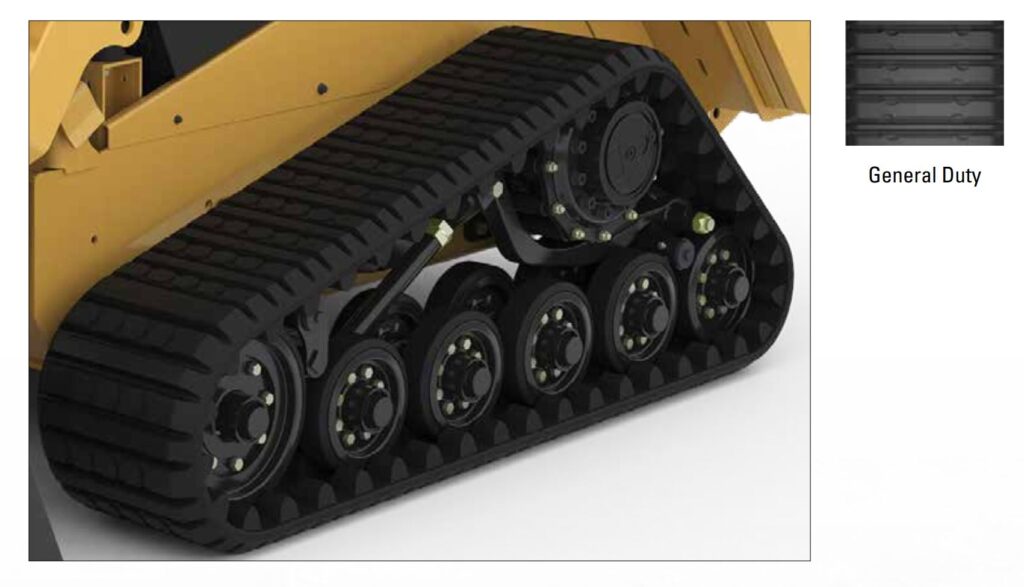
| Modelo de máquina | Serie de máquinas | Número de pieza de la pista | Tamaño de la pista: ancho x paso x número de orejetas mm (pulg.) | Descripción |
|---|---|---|---|---|
| 247 | A, B, B2, B3 | 420-9876 | 381x100x42 (15x4x42) | Oruga de servicio general de 381 mm (15") |
| 257 | A, B, B2, B3, D, D3 | 420-9876 | 381x100x42 (15x4x42) | Oruga de servicio general de 381 mm (15") |
| 267, 277 | A, B | 420-9878 | 457x100x51 (18x4x51) | Oruga de servicio general de 457 mm (18") |
| 277 | C, C2, D | 420-9877 | 457x100x56 (18x4x56) | Oruga de servicio general de 457 mm (18") |
| 287 | A, B | 420-9879 | 457x100x56 (18x4x56) | Oruga de servicio general de 457 mm (18") |
| 287 | C, C2, D | 420-9877 | 457x100x56 (18x4x56) | Oruga de servicio general de 457 mm (18") |
| 297 | C, D, D2, D2 XHP | 420-9877 | 457x100x56 (18x4x56) | Oruga de servicio general de 457 mm (18") |
VII. Adapte las pistas a su trabajo: ¿roca, tierra, césped o nieve?
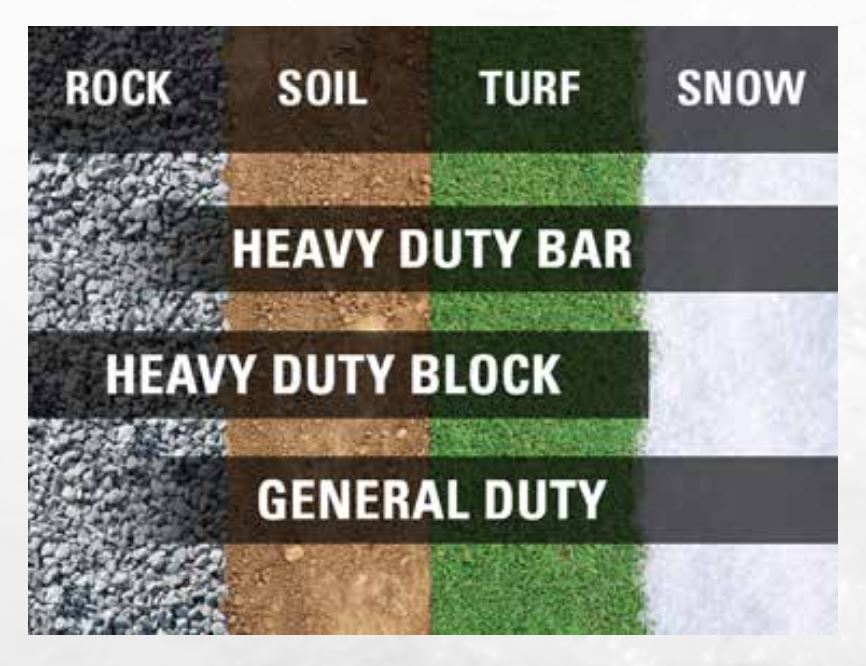
¿Trabajando sobre roca o grava?
¡Esto es duro para las orugas! Provoca un alto impacto y abrasión (raspaduras). Para estas condiciones, se suelen recomendar orugas de bloques de alta resistencia (para CTL). Sus bloques robustos y duraderos soportan mejor el desgaste que otros diseños. Las orugas de uso general podrían desgastarse más rápido en este caso.
¿Trabajando en tierra y suelo?
La mayoría de las orugas funcionan bien en tierra. Las orugas de bloque de alta resistencia ofrecen gran durabilidad. Las orugas de barra de alta resistencia (CTL) ofrecen buena tracción, especialmente si el suelo es blando o fangoso. Las orugas de uso general también son adecuadas para trabajos generales en tierra.
¿Trabajando sobre césped o moqueta?
¿Trabajando en la nieve?
VIII. Cómo encontrar fácilmente el modelo de su máquina CAT y el tamaño de la vía
IX. Considere la durabilidad frente al costo: cadenas OEM frente a cadenas de repuesto
IX. Consejos sencillos para prolongar la vida útil de las orugas de goma de su CAT
· Conduzca con inteligencia:
· Presta atención por dónde conduces:
· Mantener las pistas limpias:
· Comprobar la tensión de la pista:
· Almacene la máquina adecuadamente:
IX. ¿Listo para elegir? Una lista rápida para tus orugas CAT perfectas
- Conozca su máquina CAT: ¿Cuál es el número de modelo y la serie exactos (por ejemplo, CAT 299D3 XE)?
- Conozca su trabajo principal: ¿Dónde trabajará más la máquina? (¿Roca, tierra, césped, nieve, pavimento?)
- Decida el tipo de oruga: Según su trabajo, ¿necesita una oruga de bloques de alta resistencia, de barras de alta resistencia, de uso general o MTL? Considere las necesidades de tracción y las irregularidades del terreno.
- Encuentra el tamaño y el número de pieza correctos: Usa el número de modelo y una guía confiable (como la guía CAT o nuestro sitio web) para encontrar el tamaño exacto (ancho x paso x orejetas) y el número de pieza que necesitas. ¡Revísalo bien!
- Compare valor y durabilidad: Compare las orugas CAT OEM con las de repuesto de alta calidad. Considere su presupuesto y la duración de las orugas. Busque una buena relación calidad-precio, no solo el precio más bajo.
X. Conclusión
Cosas para recordar:
- Los caminos correctos importan: afectan el rendimiento, el tiempo de actividad, el costo y la seguridad.
- Conozca su máquina: obtenga el número de modelo CAT exacto.
- Conozca su lugar de trabajo: Adapte el tipo de oruga (barras, bloques, uso general) a las condiciones del suelo (roca, tierra, nieve).
- Verifique el tamaño: utilice el ancho x paso x orejetas de una guía para garantizar el ajuste.
- Considere el valor: compare las orugas OEM y de posventa de calidad para durabilidad versus costo.
- Conduce de forma inteligente y en pistas limpias: un cuidado sencillo hace que las pistas duren mucho más.
Ahora ya sabe cómo elegir las mejores orugas de goma para su cargadora o excavadora CAT. ¿Listo para encontrar orugas de alta calidad que ofrecen gran valor y durabilidad?
En Nissitrac, le facilitamos la búsqueda de las orugas de goma de repuesto adecuadas. Ofrecemos una amplia selección de orugas resistentes de repuesto, diseñadas para adaptarse perfectamente a su máquina CAT, a menudo a un precio mejor que el de las originales. Nuestro equipo entiende de orugas y estamos aquí para ayudarle a encontrar justo lo que necesita.
Comentarios
- Pistas de fricción Ag
- Pistas positivas de agricultura
- Sistemas de seguimiento de conversión
- Orugas para minicargadoras
- Pistas para mini cosechadoras
- Orugas para dumpers con transportador de orugas
- Pistas para pavimentadoras de asfalto
- Orugas de caucho que no dejan marcas
- Orugas para miniexcavadoras
- Personaliza tus pistas
Etiquetas
- +86-1555-000-4848
- [email protected]
- De lunes a viernes, de 09:00 a 18:00


